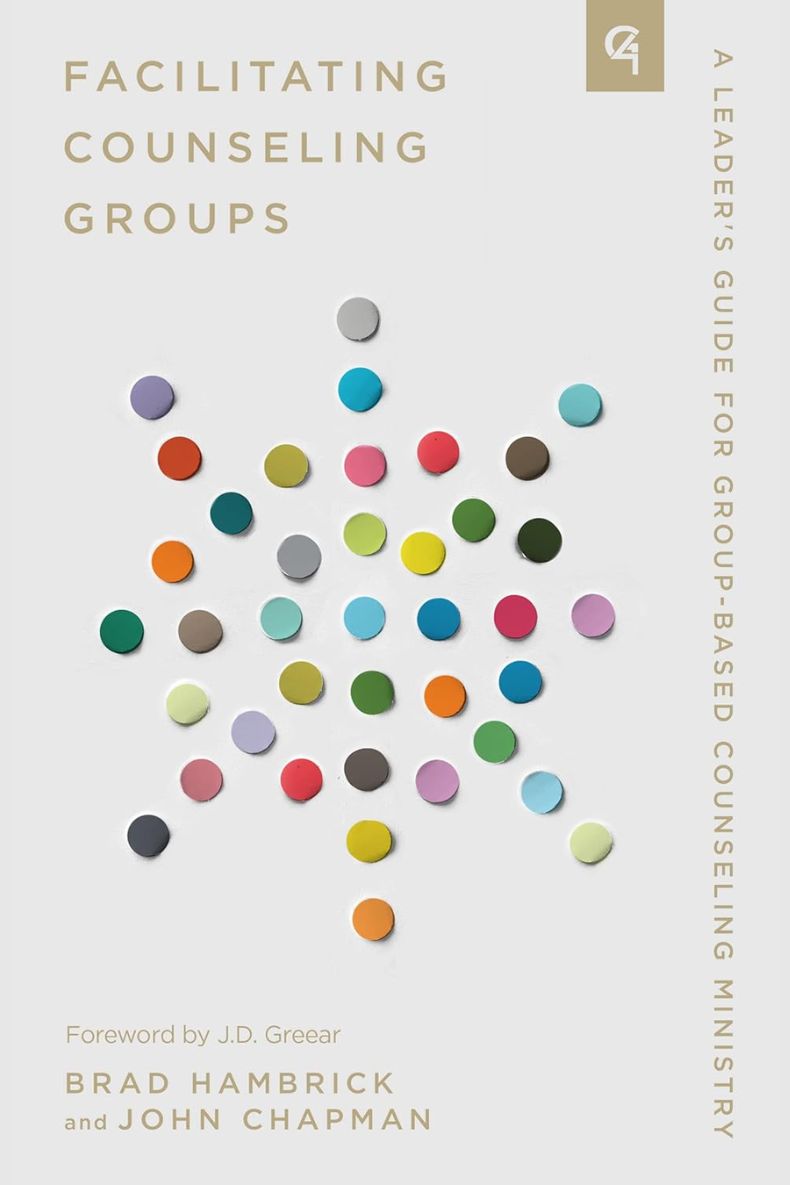Facilitating Counseling Groups: A Leader’s Guide for Church-Based Counseling Ministry, by Brad Hambrick and John Chapman. Greensboro, NC: New Growth Press, 2023. 176 pp. $17.00.
Brad Hambrick (ThM, EdD) serves as the Pastor of Counseling at The Summit Church in Durham, NC. He also serves as Assistant Professor of Biblical Counseling at Southeastern Baptist Theological Seminary, a council member of the Biblical Counseling Coalition, and has authored several books, including Making Sense of Forgiveness, Angry with God, and the Church-Based Counseling series, and has served as general editor for the Becoming a Church that Cares Well for the Abused curriculum. John Chapman (MDiv) serves as the Director of G4 Recovery-Support Group Ministries at The Summit Church in Durham, NC. He holds an MDiv in Biblical Counseling and is pursuing a Doctor of Education at Southeastern Baptist Theological Seminary.
The book’s trajectory is intentional and practical. Following a brief introduction, the authors give an overview of a G4 counseling group session (section 1). Section two focuses on the needs of individual counselees followed by section three which describes a counseling group’s collective life. At all times the target is action meeting real needs. The authors round out the book’s content with three appendices: the first treats G4 nine-step curriculums; next, comes what to do when something goes badly; and finally, they set forth the ten commandments of G4 self-care for sustainable leadership.
But does counseling group ministry appear in scripture? Once Job settled into his mourning seat on the trash heap, his friends came from afar and met on the road to Job’s home. Scripture tells us they “met together by agreement to go and sympathize with him and comfort him” (Job 2:1). From this we gather that sympathy and comfort are two goals in group counseling. We might wonder how the conversation went as they made their way to Job as he sat in the dump. Once they arrived, they sat in silence for a week before speaking. Sympathizing and comforting begin with listening.
Regrettably, their counsel, based on their theological interpretation of Job’s circumstances, was incorrect. But their concern and willingness to sit and lament with their friend were fitting. In many important ways, this was a counseling group. Scripture says, “When they saw Job they wept” (Job 2:12). We can learn from their weeping and sitting in silence until Job was ready to speak.
Leading a counseling group differs from leading a typical discipleship group, even if both exist in the same church. For example, a counseling group focuses on specific needs, garners heightened levels of vulnerability about matters of greater sensitivity, and requires more skill and intentionality from its leader. We expect this degree of ministry focus from a pastor. But when laypersons are well-equipped, they can minister effectively in a group counselling context. Lay group leaders may see God multiply the work he once did in their lives as he works in the hearts of people walking a similar journey. Lay counselors will benefit greatly from resource support that enables their ministry with a counseling group to thrive:
The book under review is one resource in a tightly woven soul-care ministry system, a framework. The following resources will equip and orient lay leaders for their role in developing a G4 (meaning the four kinds of Gospel groups) and GCM (meaning Gospel Centered Marriage) framework in their local church: (1) Mobilizing Church-Based Training (New Growth Press, 2023) contains the content the church leadership needs to discuss when launching or expanding G4 and GCM. In this sense, it is a companion volume. (2) Facilitating Counseling Groups (under review New Growth Press, 2023) will help pastors train and resource the G4 leaders. (3) Mentor Training Manual will help pastors train and resource the GCM leaders (the GCM Mentor Training Manual and mentor training videos are available at bradhambrick.com/gem).
Embedded in the counseling group framework advocated in the book is a form of organizational design that is deeply rooted in biblical ecclesiology. My wife and I would have benefited from this book and its supporting resources years ago when we started a parent group ministry for families with disabilities (think G4 outreach) and sought to integrate it with our church’s young marrieds fellowship group (think GCM) for which I served as shepherd. Why so? Not only would the structure of the two overlapping ministries have been more intentional, but also, we would have been more effective at engaging the individuals and families of those two ministry groups we wanted to integrate. Finally, we might have shared our work with others more effectively.
This reviewer highly recommends the book under review as well as the carefully developed resources that support it. Churches and their pastors that want to engage their lay people and see the need for counseling groups will meet the spiritual needs in an intentional and beneficial way.

